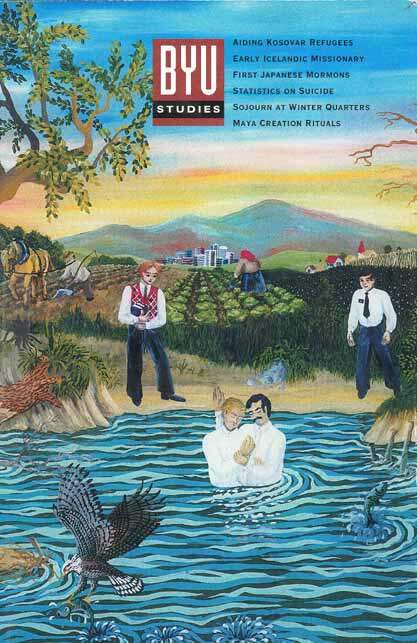The Temple in Time and Eternity; The Gate of Heaven
Book Notice
-
By
Gary P. Gillum,
The Temple in Time and Eternity, edited by Donald W. Parry and Stephen D. Ricks (FARMS, 1999)
The Gate of Heaven: Insights on the Doctrines and Symbols of the Temple, by Matthew B. Brown (Covenant Communications, 1999)
The Gate of Heaven: Insights on the Doctrines and Symbols of the Temple, by Matthew B. Brown (Covenant Communications, 1999)
Even though there is no substitute for experiencing selfless spiritual service of the highest order, receiving personal revelation, and basking in the refulgent atmosphere of the House of the Lord, the scriptures and other writings about the temple can prepare our hearts and minds so that we are more able to take full advantage of this sacred work. Two recently published books will take you out of the world and into more spiritual realms and could be recommended by any temple president to his patrons.
The Temple in Time and Eternity follows Temples of the Ancient World: Ritual and Symbolism (1994). While the earlier volume contains twenty-four essays on past and present temples, this second volume comprises eleven articles in three sections: “Temples and Ritual,” “Temples in the Israelite Tradition,” and “Temples in the Non-Israelite Tradition.” The lead essay, Hugh Nibley’s “Abraham’s Temple Drama,” is based on a very popular presentation given April 6, 1999, at Brigham Young University. The final two essays, “The Great Mosque and Its Ka‛ba as an Islamic Temple Complex in Light of Lundquist’s Typology of Ancient Near Eastern Temples” (by Gaye Strathearn and Brian M. Hauglid) and “Inside a Sumerian Temple: The Ekishnugal at Ur” (by E. Jan Wilson) are two unprecedented but excellent forays into temple topics that are not usually associated with LDS temple literature.
While Matthew Brown’s 1997 book on temples, Symbols in Stone, looks at symbols of the Kirtland, Nauvoo, and Salt Lake Temples, as well as the plans for the temple at New Jerusalem, The Gate of Heaven offers insights into symbols and doctrines throughout the ages. There are eight chapters, including “The Tabernacle of Jehovah,” “The Temple on Mount Zion,” and “Early Christians and the House of the Lord,” as well as an appendix that elucidates the history of Freemasonry. Brown’s book is full of surprises, including an illustration taken “from an early Christian catacomb painting that depicts a saint being introduced into paradise by the parting of a curtain” (189).
Although The Gate of Heaven will probably be easier to understand for most Latter-day Saints, I would not call it any less “scholarly” than The Temple in Time and Eternity. Both have the power and insight to inspire, motivate, and stir the soul not only to attend the temple more often but to better appreciate its blessings and ordinances. These books encourage us to feel “set apart” from the world, enhancing our lives with a sense of the sacred and holy.
Notes
- Fire on Ice: The Conversion and Life of Gudmundur Gudmundsson
- Tomizo and Tokujiro: The First Japanese Mormons
- “Pleasing to the Eyes of an Exile”: The Latter-day Saint Sojourn at Winter Quarters, 1846–1848
- The Dance of First Beginnings: Contemporary Maya Creation Rituals in a World Context
- Statistics on Suicide and LDS Church Involvement in Males Age 15–34
Articles
- Mourn with Those That Mourn . . . Comfort Those That Stand in Need of Comfort: Dean Byrd’s Diary of the Kosovar Refugee Camps
- New Photographs of Wilford Woodruff’s Trip to Alaska, 1895
Documents
- Three Reviews of Mormon America: The Power and the Promise
- What E’er Thou Art, Act Well Thy Part: The Missionary Diaries of David O. McKay
- Fawn McKay Brodie: A Biographer’s Life
- Out of the Black Patch: The Autobiography of Effie Marquess Carmack, Folk Musician, Artist, and Writer
- Confronting the Myth of Self-Esteem: Twelve Keys to Finding Peace
Reviews
- The Journals of George Q. Cannon, Volume I: To California in ’49
- The Temple in Time and Eternity; The Gate of Heaven
- Understanding Isaiah
- C. S. Lewis: The Man and His Message
Book Notices
Purchase this Issue
Share This Article With Someone
Share This Article With Someone
Print ISSN: 2837-0031
Online ISSN: 2837-004X


